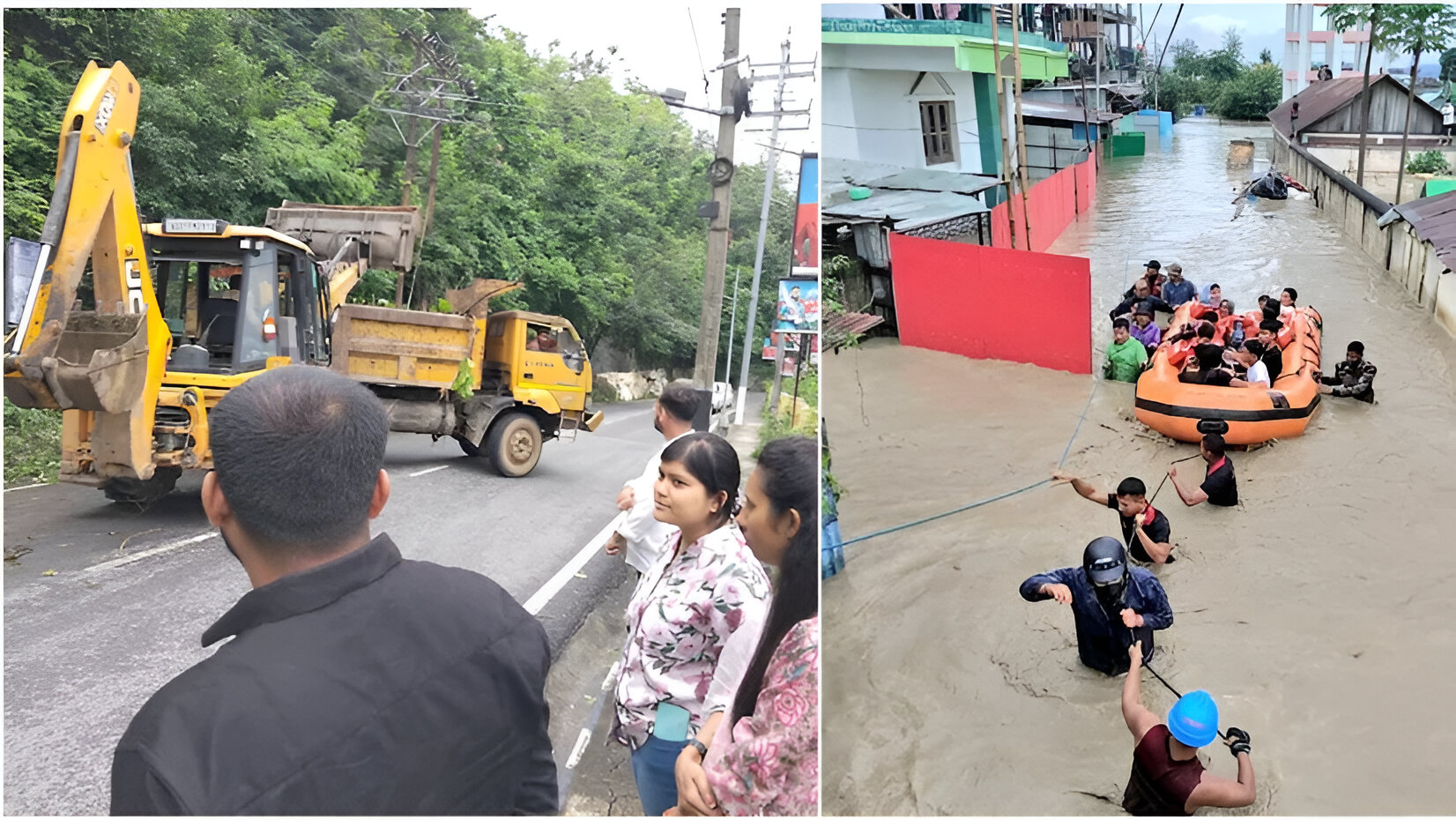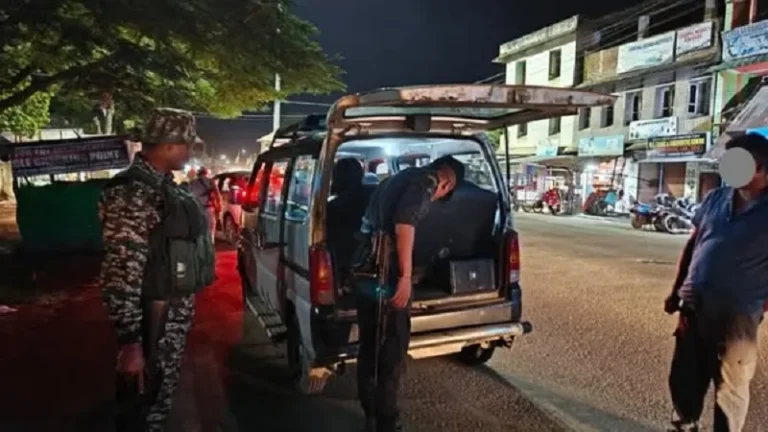Northeast India Reels Under Monsoon Fury: Over 30 Dead, Thousands Displaced in Assam, Arunachal, Manipur, and Mizoram
Quick Summary
Torrential monsoon rains have wreaked havoc across Northeast India, leading to devastating floods and landslides. Over the past 48 hours, more than 30 lives have been lost, and thousands have been displaced in states like Assam, Arunachal Pradesh, Manipur, and Mizoram. The relentless downpour, attributed to a depression over Bangladesh and adjoining Meghalaya, has overwhelmed infrastructure, submerged villages, and disrupted daily life.
Assam: The Brahmaputra’s Overflowing Fury
Assam, often the first to bear the brunt of monsoon rains, has witnessed catastrophic flooding this season. The Brahmaputra River has overflowed, submerging 175 villages across 12 districts, including Dhemaji, South Salmara, Dibrugarh, and Biswanath. Over 58,000 residents have been affected, with more than 7,000 seeking refuge in 16 relief camps.
Tragically, eight lives have been lost in the state. In Guwahati’s Bonda area, a deadly landslide claimed five lives, prompting the closure of schools and government offices in Kamrup and the capital city.
Arunachal Pradesh: Landslides and Isolation
Arunachal Pradesh has reported at least nine deaths, primarily due to landslides. In East Kameng district, seven members of two families perished when a landslide swept their vehicle into a gorge along the Bana-Seppa highway. Two more fatalities occurred at a cabbage farm in Lower Subansiri district.
The Sigin River’s overflow in Upper Subansiri district inundated over 100 homes in Daporijo town. Landslides have also severed road connections in West Kameng, isolating several villages.
Manipur: Breached Embankments and Mass Evacuations
Manipur’s hill districts—Senapati, Tamenglong, Noney, and Pherzawl—have been severely affected by flash floods and landslides. The Imphal River breached its embankments, submerging large parts of Imphal East. Authorities have evacuated at least 800 individuals, including women, children, and the elderly, from Imphal East and West districts.
The state’s infrastructure has been overwhelmed, with roads submerged and daily life disrupted. The failure of stormwater drainage systems has exacerbated the situation, leaving residents in distress.
Mizoram: Landslides and Blocked Routes
Mizoram has reported six deaths due to heavy monsoon rains. Landslides have destroyed at least 18 buildings and blocked key transportation routes, severely disrupting travel and access across the region.
In Champhai district, a family of three lost their lives when their home was buried under a landslide. Another fatality was reported in Serchhip.
Government Response and Relief Efforts
Authorities across the affected states have initiated relief and rescue operations. The Indian Army and paramilitary forces have been deployed in Manipur, assisting in evacuations and providing aid to the displaced.
In Assam, the State Disaster Management Authority is coordinating relief efforts, with over 7,000 people housed in relief camps. However, the scale of the disaster has overwhelmed existing resources, highlighting the need for better preparedness and infrastructure.
FAQs
Q1: Which areas are most affected by the recent floods and landslides in Northeast India?
Assam, Arunachal Pradesh, Manipur, and Mizoram have reported the most significant impact, with multiple districts submerged and infrastructure damaged.
Q2: What is causing the increased frequency of such disasters in the region?
Climate change, deforestation, unplanned urbanization, and inadequate infrastructure contribute to the region’s heightened vulnerability to extreme weather events.
Q3: How are the authorities responding to the crisis?
State and central agencies, including the Indian Army, are conducting rescue and relief operations, setting up relief camps, and providing aid to the affected populations.
Q4: What long-term measures are needed to prevent such disasters?
Investments in resilient infrastructure, early warning systems, community education, and environmental conservation are crucial for mitigating future risks.
Q5: How can individuals contribute to disaster preparedness and response?
Staying informed, participating in community awareness programs, and supporting environmental conservation efforts can enhance collective resilience.





